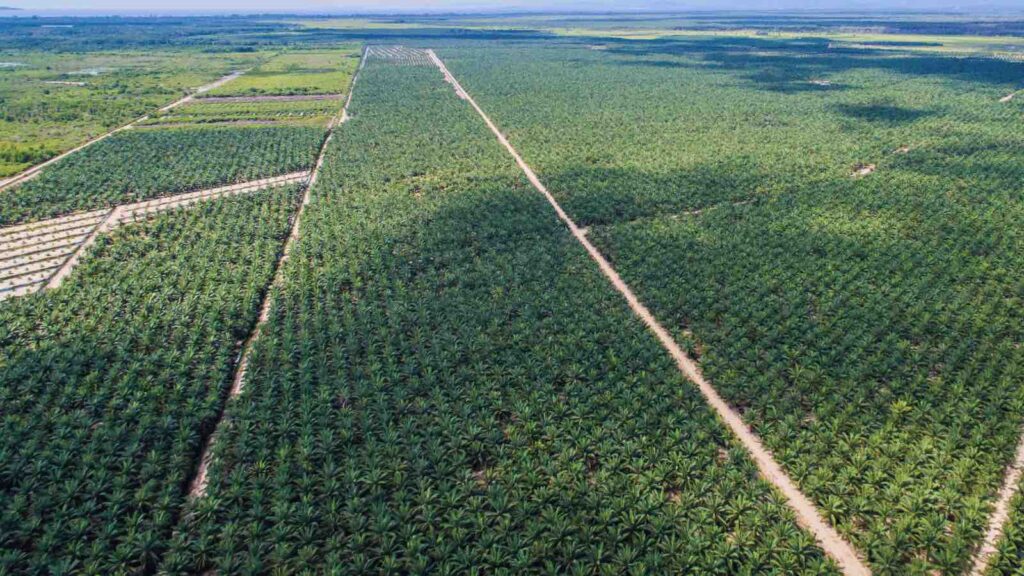The mini forests, however, do more than just provide shelter and food for various creatures. They also improve the overall health of the ecosystem.
In the midst of vast stretches of uniform palm oil plantations in Sumatra, Indonesia, a novel experiment is taking root—literally. Scientists have planted ‘mini forests’ within these plantations, and their recent findings are painting a hopeful picture for ecological restoration in agricultural landscapes.
RELEVANT SUSTAINABLE GOALS


The study, detailed in the prestigious journal Nature on May 24, 2023, reveals that these pockets of biodiversity are not just surviving but thriving, enhancing ecosystem functions without hindering the productivity of the surrounding palm oil trees.
‘Mini Forests’ Spark Biodiversity Revival in Sumatra
For decades, the expansion of oil palm plantations has been synonymous with deforestation in Indonesia, reshaping over 9.79 million hectares of lush tropical forests into uniform crop rows. This transformation has been a double-edged sword, bringing economic growth on one edge and ecological devastation on the other, stripping the land of its rich biodiversity and valuable ecosystem services.
Confronting this challenge, a collaboration of researchers from various universities embarked on a quest to introduce diversity back into these agricultural landscapes. Their strategy was straightforward yet innovative: establish 52 miniature forests, each spanning 2.8 hectares, amid the sea of oil palms.
As their experiment progressed over five years, the scientists monitored 19 indicators of ecological function within these islands of greenery. The results, they say, were promising. These mini forests hosted a 150% increase in biodiversity compared to areas without them. They became oases for a range of species—from soil bacteria to canopy-dwelling birds and elusive bats—transforming a once inhospitable environment into a sanctuary teeming with life.
The mini forests, however, do more than just provide shelter and food for various creatures. They also improve the overall health of the ecosystem. Researchers noted better water retention, enhanced nutrient cycles, and more effective pollination services in the vicinity of these biodiversity hotspots. All this, without competing for nutrients with the palm oil crops. On the contrary, there was a curious observation: the palm oil yield did not decline with the introduction of the mini forests. It appears that these small patches of dense vegetation might even benefit crop production, although this aspect warrants further investigation.
The findings stand as a testament to the resilience of nature, yet the researchers are cautious not to oversell their implications. While the return of many animal species to these mini forests is encouraging, they mainly comprise species that can coexist with human activity. The grander, more elusive species like orangutans, tigers, and elephants, which once roamed these lands, remain absent. The mini forests are not a panacea for the biodiversity losses that have occurred due to deforestation; they cannot fully replicate the complex ecosystems that once existed.
What the study does illuminate is a potential pathway for plantation landscapes worldwide. By integrating elements of native ecosystems into monoculture plantations, there could be a way to align agricultural productivity with ecological integrity—a model where both humanity and nature don’t just coexist but support each other’s flourishing.
As the world grapples with the twin crises of biodiversity loss and climate change, such innovative approaches could pave the way for a more sustainable compromise. The mini forests in Sumatra’s palm oil plantations may be small in size, but they offer a large vision of what agricultural landscapes could become: not just zones of production, but havens of biodiversity that nod to the forests that once were.
Lead image courtesy of Yusnizam from Getty Images
You may also be interested in :
Forest IQ: A New Ally Advancing Financial Institutions Toward Deforestation-Free Portfolios



